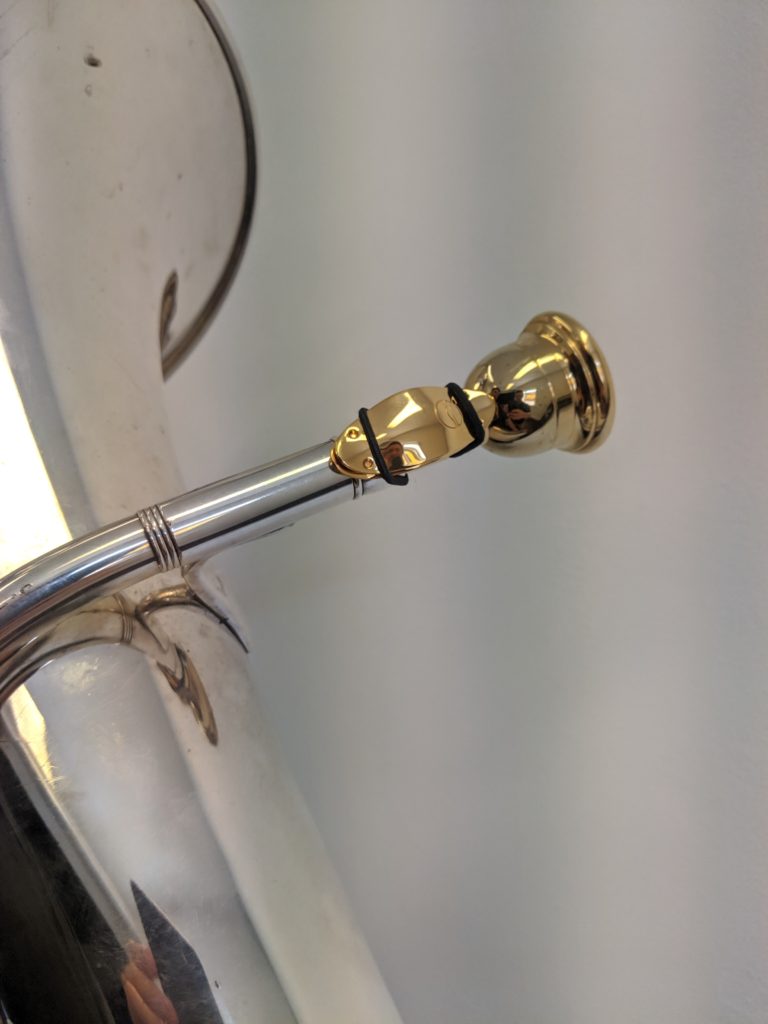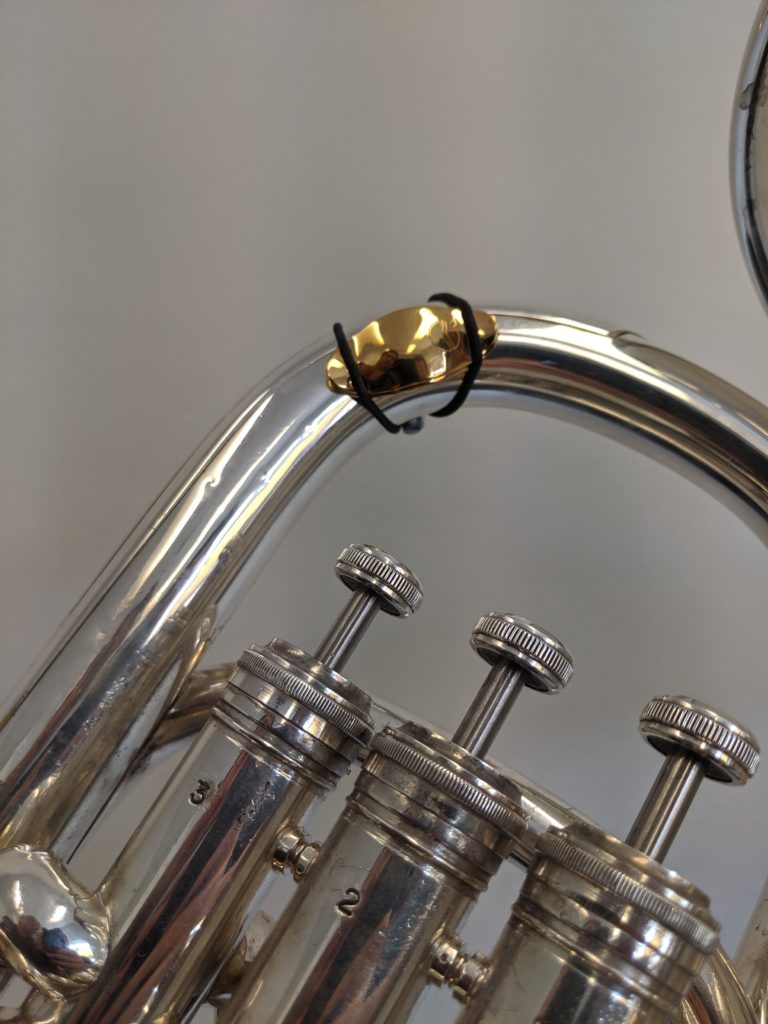LefreQue Part 2 – Euphonium
11th October 2019Like woodwind instruments, brass instruments can benefit from the addition of a LefreQue acoustic bridge as part of the set-up. Our brass specialist, Matt, had a go on a range of our LefreQue stock with his euphonium. As well as trying the different materials, Matt tried the LefreQue at different placements on the instrument.
As I found when testing for the flute blog, the LefreQue appears to show it’s best results when the material matches that of your instrument. This was a fine conclusion on a solid silver instrument, but what about plated instruments? Or when the two parts being bridged don’t ‘match’ in material? Matt and I set out to discover what works best!

The best results were found when the plates were more towards the mouthpiece than the leadpipe.
Brass LefreQue
The sound produced by the raw brass was more compact than without a LefreQue, with more ‘core’ as described by Matt. Whilst this sound was more direct, it wasn’t to Matt’s preference. We reckon it would suit someone playing as a soloist in chamber settings. On his euphonium, Matt didn’t notice any significant changes to the intonation.
The silver plated LefreQue is one of Matt’s favourites of the brass stock. The pedal register spoke clearly and the sound was tonally homogeneous throughout the instrument’s range.
Gold plated brass is also one of his preferred products – which supports my idea that the material of the LefreQue should match materials on your instrument, as the the mouthpiece Matt was using was also gold plated brass. We felt this produced a warmer, more resonant sound. Matt also thought the intonation wass more even across intervals, and that he could put less effort into making his usual corrections.
Silver LefreQue
In solid silver, the LefreQue produced a brighter sound overall – which you can expect of the material, but with an openness to the sound. This is in line with LefreQue’s claim that their product assists ‘surround projection’. Matt commented that the different partials were ‘slotting’ easily and accurately (for those like myself unaware of the brass players’ lingo, this means the harmonic partials were easy to place and nicely in tune!).
Matt also favoured the gold plated silver. As well as producing a sweeter tone, Matt commented that the ‘slotting’ was, again, excellent, and it exemplifies LefreQue’s ‘surround projection’. We were particularly impressed with how it opened up the mid to high registers. This was our favourite of the LeqfreQue Matt tried – the combination of gold plating and solid silver most closely matches Matt’s euphonium setup.
What About Placement?
As well as across the mouthpiece-leadpipe connection, there are other options for placing the LefreQue at different places on the tubing of the instrument. Steven Mead, euphonium virtuoso and teacher, talked about different ‘nodal’ points on the instrument. These different points, when equipped with a LefreQue, would vibrate differently and affect the euphonium’s response in various ways. Matt wanted to see if these placements would have any effect on his instrument.
All of the further placement tests we carried out also had the gold plated silver LefreQue at the mouthpiece-leadpipe connection. First, we tried the silver plated brass on the second valve knuckle. Matt did notice some change in response, but nothing notable. We thought there may be a greater response on the first valve knuckle, but the result was similar. These results are entirely subjective however, and each instrument responds to LefreQue differently.

We did find a significant difference when fixing the LefreQue to the euphonium’s first branch, again using silver plated brass. This boosted the ‘surround projection’ effect, really broadening the sound and improving ease of projection. Matt also found that using a larger band helped the response, as this allowed the plates to vibrate without being ‘choked’. We tried this again, this time with the gold plated brass (the same as his mouthpiece). This resulted in the response being, in Matt’s words, ‘more slotty’!
How can I get one?!
Either online or in store! All of the plates used were 41mm, and the bands were 55mm, as usually recommended for euphonium.
But remember it’s all down to preference! So come on in and have a play around with the variety of materials, band lengths, and two sizes of LefreQue plates. Discover for yourself exactly how LefreQue can affect your playing.